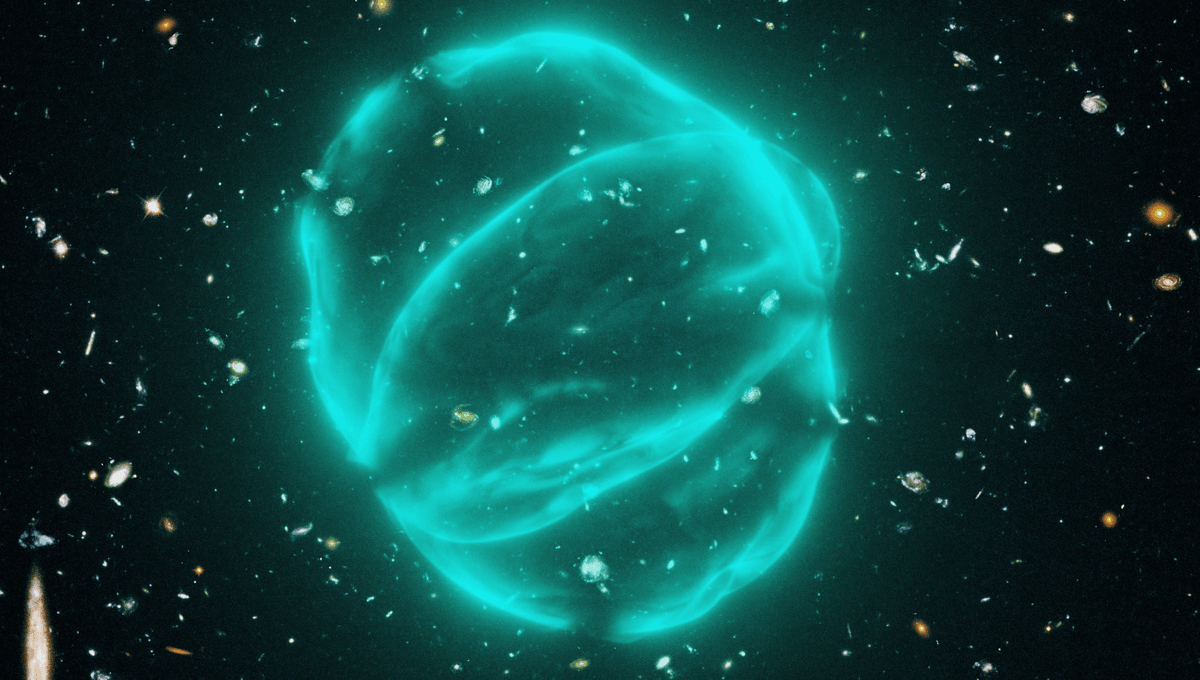
So-called Odd Radio Circles (ORCs) are the products of vast outflows of gas from galaxies generating stars at a phenomenal rate. A team of astronomers have concluded supernovae within those galaxies are pumping out enormous winds, with the ORCs as the end product. That might have been the explanation all along, had it not been for the mind-blowing size of this phenomenon, which led to the idea initially being considered unlikely.
Until recently, radio telescopes could only focus effectively on small areas of the sky at a time. Anything too big became effectively invisible. Instead of photographing random patches of sky, as we have done with optical telescopes, there has been a tendency to focus on places where results from other wavelengths lead us to expect to find something.
That changed with the building of the Murchison Wide Field Array and the Australian Square Kilometre Array Pathfinder (ASKAP), which capture such large areas that broad surveys become possible. In 2020, astronomers using the ASKAP discovered large, roughly circular areas of the sky are emitting at similar wavelengths. After satisfying themselves these were not a result of equipment error, but not coming up with any other satisfactory explanation, the discoverers called them ORCs. The name is accurate, reminiscent of Middle Earth, and doesn’t contain any guesses about the cause that might turn out to be wrong. It’s also less likely to offend than WTF, which was the first effort.
Back then one of the discoverers, Professor Ray Norris of Western Sydney University told IFLScience, “We don’t see circles like this any other way, except supernova remnants. And these are no supernova remnants.”
According to a newly published paper, however, that is exactly what they are.
Norris and the rest of the team who found the ORCs thought they couldn’t be supernova remnants because they were too big. All the ORCs we have found have quite distant galaxies near their centers, and many exist too far from the galactic plane to be likely to be part of the Milky Way. However, given their angular size, if they really do originate from these galaxies then ORCs are so large they bend the minds of even the sort of people who bend others’ minds with scale for a living. Powerful as supernovae are, they shouldn’t be able to create blast radii millions of light-years wide.
However, according to Professor Alison Coil of the University of California, San Diego and co-authors, what one supernova can’t do, many working together can.
Starburst galaxies produce stars, often very massive ones, at a rate many times greater than the Milky Way. The more massive a star, the shorter its life, and if the mass is greater than eight solar masses it ends as a supernova. Consequently, any galaxy that has been in a starburst phase for tens of millions of years has plenty of exploding stars. Although there may be years between each bang, by astronomical standards these explosions almost coincide.
That, according to Coil, accelerates winds carrying gas equal to 200 times the mass of the Sun to 2,000 kilometers per second (4,500,000 mph or almost 1 percent of light speed). That’s enough to push some of the gas out beyond the stars’ galaxy. Electrons stripped from the gas go even further.
ORCs’ other original odd feature was that initially no one could find any sign of them at wavelengths short enough to be viewed by other types of telescopes. Coil decided to keep trying, and used the Keck Observatory to examine ORC 4. She found a high concentration of hot, very compressed ionized gas out to a distance of about 130,000 light-years from the central galaxy. That’s only about a 10th of the distance at which the radio waves have been detected, but provides a possible source for the electrons thought to be producing those radio emissions.
Like all large galaxies, this one is the product of galactic mergers. Unlike the Milky Way, however, Coil and co-authors think it was formed from two galaxies of similar size, rather than a series of smaller ones being consumed. “The merger pushes all the gas into a very small region, which causes an intense burst of star formation. Massive stars burn out quickly and when they die, they expel their gas as outflowing winds,” Coil said in a statement.
Eventually, galaxies run out of the material to form new stars. “There was a burst of star formation in this galaxy, but it ended roughly a billion years ago,” Coil said.
Simulations run by team member Dr Cassandra Lochhaas of the Harvard & Smithsonian Center for Astrophysics indicate rings produced by the gas outflow can last for 750 million years. Within this ring, cooler gas collapses back on the galaxy. The mismatch in time suggests there is still work to do, but the explanation may be approximately right.
“To make this work you need a high-mass outflow rate, meaning it’s ejecting a lot of material very quickly. And the surrounding gas just outside the galaxy has to be low density, otherwise the shock stalls. These are the two key factors,” said Coil. The combination is so rare, only five ORCs have so far been found.
The study is published in Nature.
Source Link: We May Finally Know What's Causing The Universe's "Odd Radio Circles"